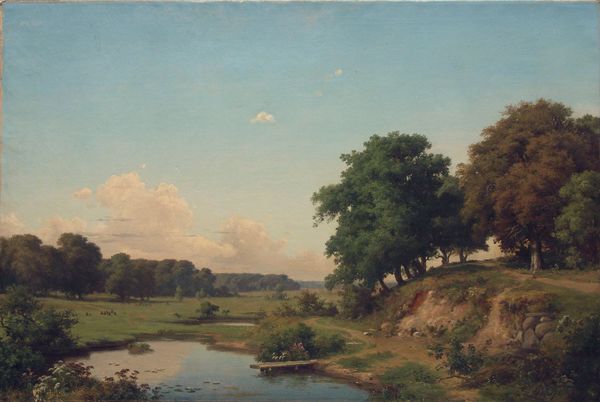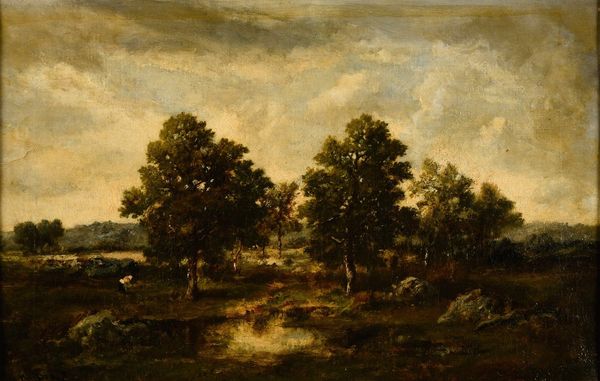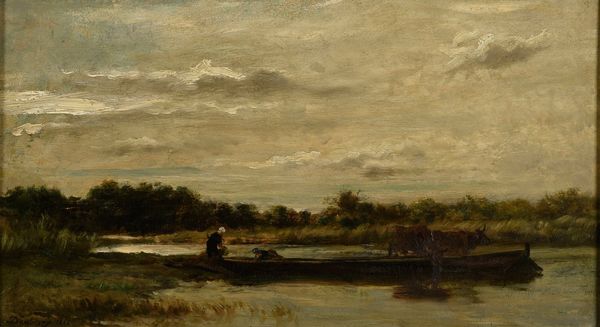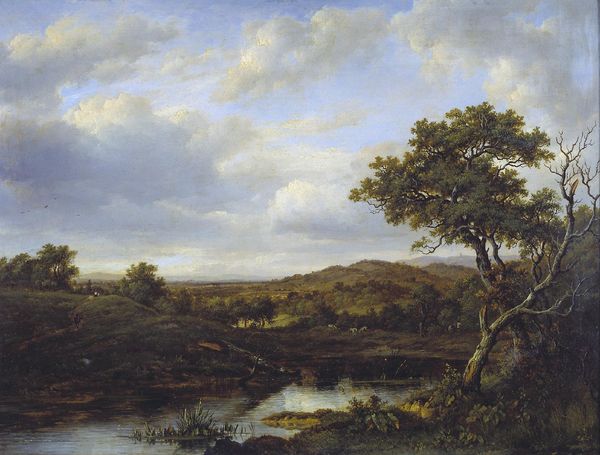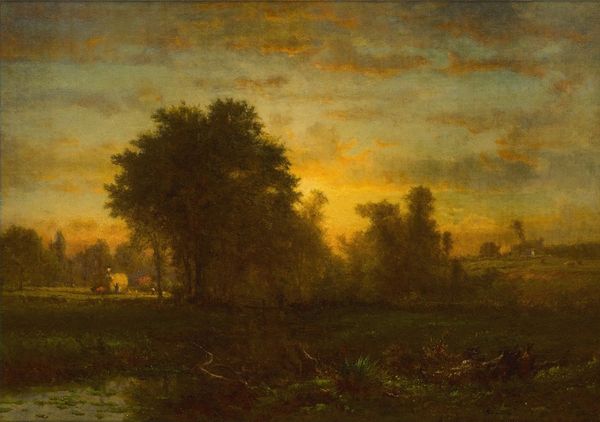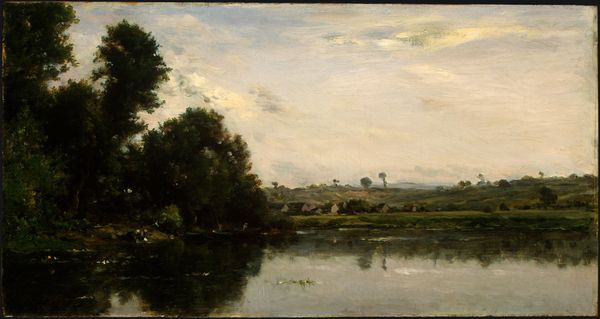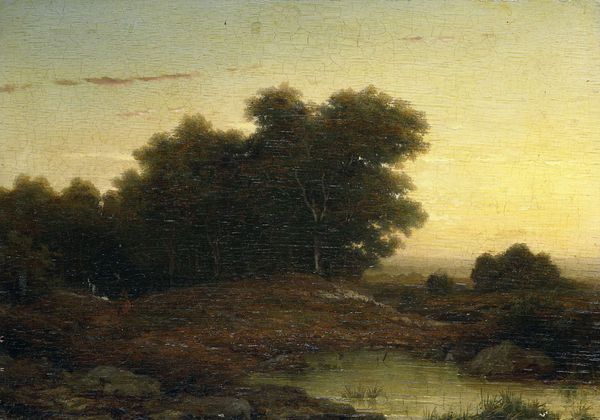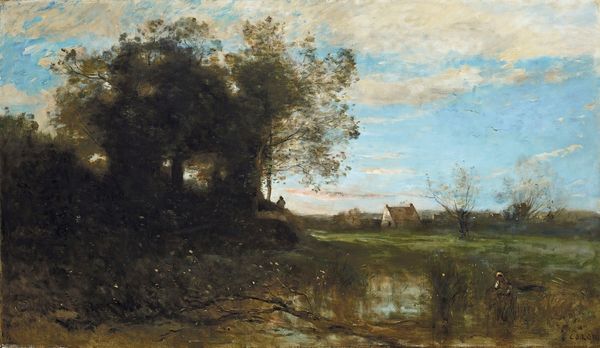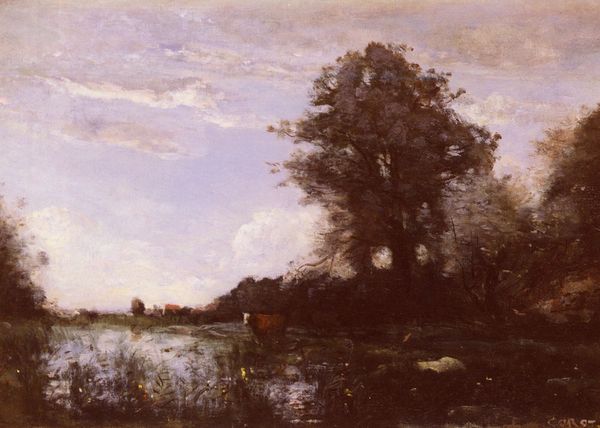
painting, oil-paint, oil-on-canvas
#
painting
#
oil-paint
#
landscape
#
romanticism
#
oil-on-canvas
Dimensions: 20 × 28 in. (50.8 × 71.12 cm) (sight)28 1/4 × 36 3/4 in. (71.76 × 93.35 cm) (outer frame)
Copyright: Public Domain
Editor: Here we have Jules Dupre's "The Pond," created in 1837 using oil on canvas. It's such a serene landscape, almost idealized. What strikes you about it? Curator: What I see is a painting deeply entrenched in its production. Consider the materials: the canvas woven, the pigments ground, the oil extracted and refined. It's not just a pretty scene; it’s the result of labor, isn't it? Editor: I hadn't thought about the labor aspect so directly. I guess I was focused on the artistry. Curator: The "artistry" is intrinsically linked. Look at those dark pigments. The richness suggests a society where resources were allocated, mined, traded. Dupre's access to quality materials was shaped by economic factors, impacting the landscape that he renders. Editor: So, even a landscape painting can reflect industrialization or societal structures? Curator: Precisely. These pastoral scenes were consumed by an increasingly urbanized population, almost a longing for a pre-industrial era. Consider how the rise of oil paint itself, a manufactured material, contributed to the popularity and spread of landscape painting. Were those buying these painting consumers romanticizing a landscape that didn't really exist anymore, divorced from the laborers who cultivated it? Editor: That is a stark, but interesting consideration. So this isn't just nature; it's a commodity? Curator: Yes, even the natural is mediated by the forces of production. Art never exists in a vacuum. Editor: That perspective completely shifts how I see the painting. It's more complex than just a pretty pond. Curator: Exactly. Considering art’s materiality opens a lens to understanding its socio-economic role. Editor: I’ll definitely look at paintings differently from now on, questioning their creation, materials and economic backgrounds. Thanks!
Comments
No comments
Be the first to comment and join the conversation on the ultimate creative platform.
